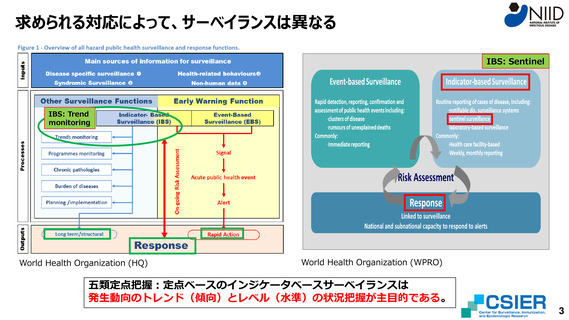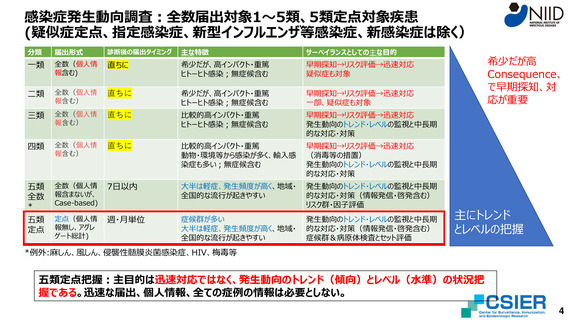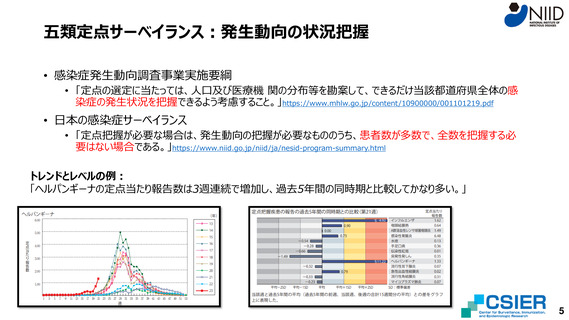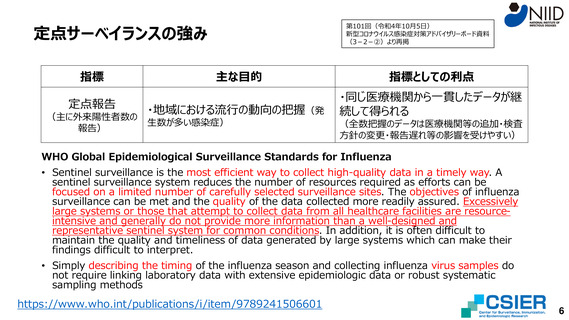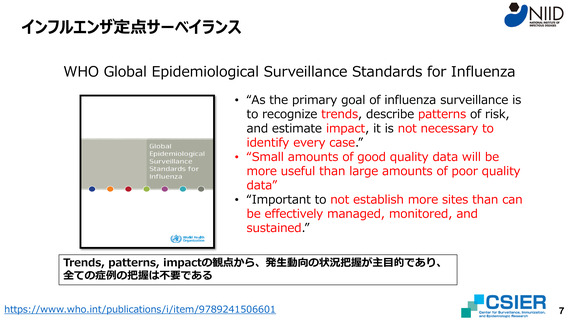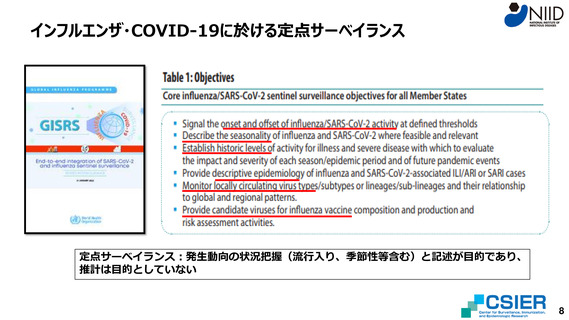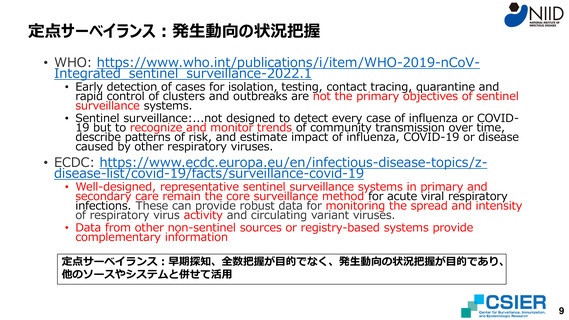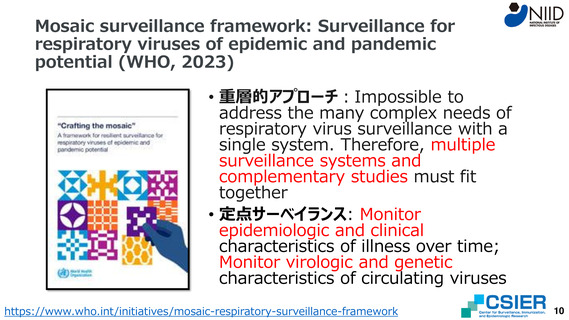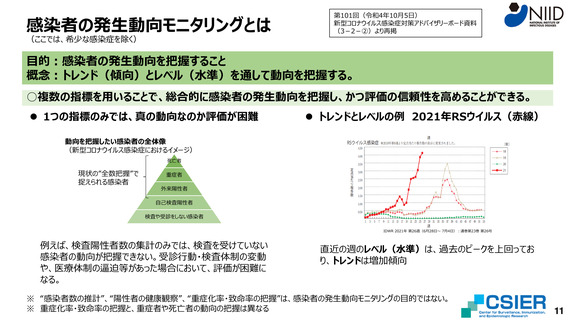よむ、つかう、まなぶ。
資料3-2 感染症サーベイランスの考え方-定点把握を中心として(感染研提出資料) (7 ページ)
出典
| 公開元URL | https://www.mhlw.go.jp/stf/seisakunitsuite/bunya/0000121431_00424.html |
| 出典情報 | 新型コロナウイルス感染症対策アドバイザリーボード(第122回 6/16)《厚生労働省》 |
ページ画像
ダウンロードした画像を利用する際は「出典情報」を明記してください。
低解像度画像をダウンロード
プレーンテキスト
資料テキストはコンピュータによる自動処理で生成されており、完全に資料と一致しない場合があります。
テキストをコピーしてご利用いただく際は資料と付け合わせてご確認ください。
インフルエンザ定点サーベイランス
WHO Global Epidemiological Surveillance Standards for Influenza
• “As the primary goal of influenza surveillance is
to recognize trends, describe patterns of risk,
and estimate impact, it is not necessary to
identify every case.”
• “Small amounts of good quality data will be
more useful than large amounts of poor quality
data”
• “Important to not establish more sites than can
be effectively managed, monitored, and
sustained.”
Trends, patterns, impactの観点から、発生動向の状況把握が主目的であり、
全ての症例の把握は不要である
https://www.who.int/publications/i/item/9789241506601
7
WHO Global Epidemiological Surveillance Standards for Influenza
• “As the primary goal of influenza surveillance is
to recognize trends, describe patterns of risk,
and estimate impact, it is not necessary to
identify every case.”
• “Small amounts of good quality data will be
more useful than large amounts of poor quality
data”
• “Important to not establish more sites than can
be effectively managed, monitored, and
sustained.”
Trends, patterns, impactの観点から、発生動向の状況把握が主目的であり、
全ての症例の把握は不要である
https://www.who.int/publications/i/item/9789241506601
7


